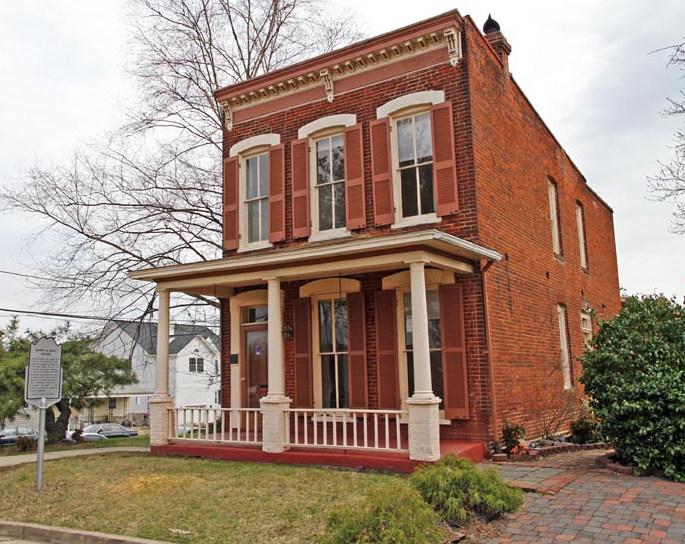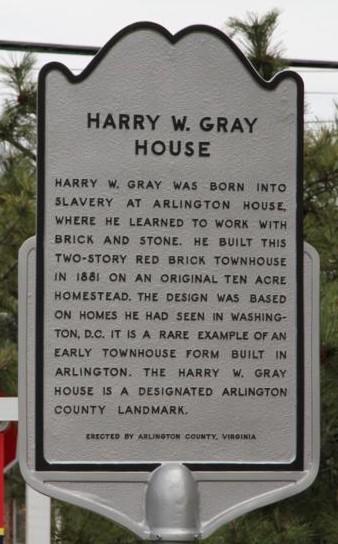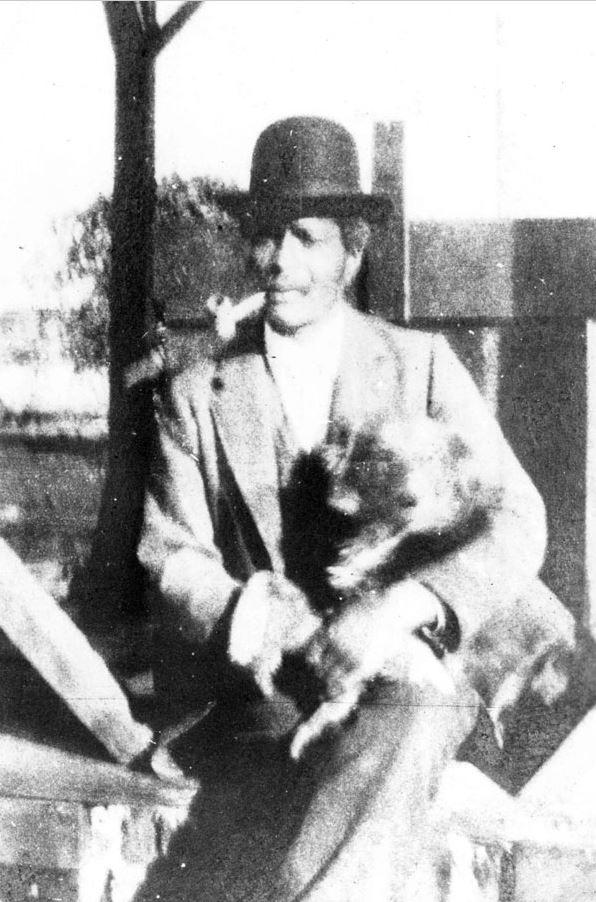Harry W. Gray House
He was a skilled mason and built the high masonry wall that surrounds what is now Arlington National Cemetery

Gray built his house in the Italianate style of fashionable townhouses he had seen in the District.
Harry W. Gray (see photo courtesy NPS) was born enslaved in about 1851 on the Custis-Lee estate at Arlington. He built his own house in 1881. He was a skilled mason and built the high masonry wall that surrounds what is now Arlington National Cemetery. His daughter, Martha Gray Gillem, said in an interview that during the Civil War, Harry was taught to read and write by the men of the Northern New York Volunteers.
Having a trade and being literate would serve him very well after emancipation, when he became a leader in Arlington County. For 40 years, he worked as a clerk and messenger at the Department of the Interior. He also worked at the Blink West Brickyard and tended his own 10-acre farm. By working 3 jobs, Harry was able to fulfill his lifelong dream of building an elegant brick townhouse for his wife and children. Unlike stone, which was easy to find and inexpensive, fired clay brick was scarce and very expensive, making it a symbol of a family’s prosperity.
In a 1963 interview, Martha Gray Gillem (pictured) said that her “Papa” bought bricks from the Blick-West Brickyard when he could afford them and over many years, bit by bit, he built the two-story row house on his farm. For posterity’s sake, Harry carved his name and the date into the last brick before putting it in place near the rear doorway. All told, the house cost about $1,800 to build, more than twice the amount he paid for the land it sat on. When the Gray family finally moved into the house on May 1, 1881, it was the only one of its kind for miles.
The house also boasted an elaborately designed landscape. Besides the house, the ten-acre property included an outhouse, a buggy shed, a barn, a pig house, a well, and a brick patio. Surrounding the house were apple, peach, pear, and cherry orchards, a cornfield, and a grazing field for livestock. Between all of these were flower gardens that must have splashed vibrant colors across the property. Plat maps even show a croquet field.
Above all his accomplishments, Harry took greatest pride in his family. He and his wife, Martha, a former slave once owned by former president James Madison, had 4 children: Thornton, Julia, Sara, and Martha. Harry taught his children that knowledge could open the doors of opportunity that racial inequities had otherwise closed to African Americans. Before he died, Harry saw Thornton become an attorney and all three daughters, teachers.
Gray built his house in the Italianate style of fashionable townhouses he had seen in the District. The house remains a sturdy structure, its longevity a testament to Gray’s workmanship. The architecture of the Harry W. Gray house was a statement about how far freed slaves had come since the Emancipation Proclamation. “The dwelling represents the monumental shift from slaves to freedmen for African Americans in the years following the Civil War,” a National Park Service document states. The house sits at present-day 1005 South Quinn Street, near Columbia Pike and adjacent to what was once a thriving Freedman’s Village.
Images


